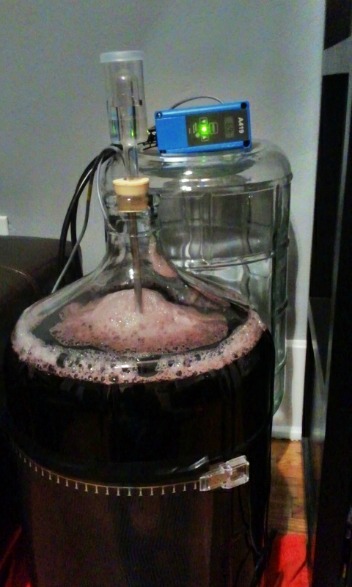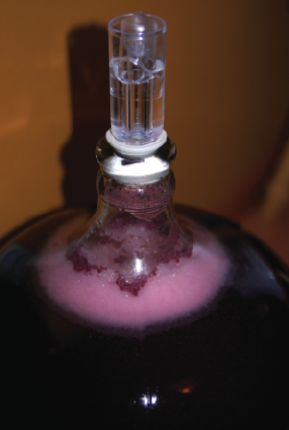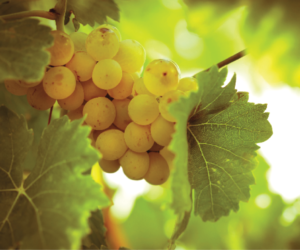
“Get the best grapes you can, and get out of the way,” said Alex MacGregor. That advice from the current winemaker at Saracina Winery in Mendocino County, who was winemaker at Sonoma County’s Everett Ridge when he told it to me, came back as I started my first “Techniques” column for WineMaker. It’s the best possible way to make the best possible wine — if your fruit lives up to it! More often than not, however, the grapes we get will not go on to make the best possible wine all by themselves. That’s where “Techniques” come into play, and I am delighted to now be part of the program at WineMaker magazine.
I have a hobby vineyard in the Petaluma Gap area of southwest Sonoma County, California. The climate is cool, so I have my 1⁄3 acre planted with half Chardonnay and half Pinot Noir. The wines I make from these grapes reflect the cool climate with elevated acid levels, difficulty getting to adequate harvest Brix levels, and — for the Pinot — relatively light color. Every year, the wine has been enjoyable to drink, but not always enjoyable to look at. Pinot tends to be on the light side among red wines, my clone selections from 1999 probably do not help me much (23 and 2A), and full physiological ripeness is often a challenge in my microclimate. Some vintages have been so pale as to border on the color of rosés made from darker-colored varieties. Besides the notoriously light Pinot Noir, there are other reds that sometimes lack color stability and intensity. We have all seen Merlot, Sangiovese and even Zinfandel that would have been more pleasing to the senses with a little more color. We do not add dye or food coloring to our wines, so we are left with maximizing the extraction and stability of the color that is native to the skin cells of red or black grapes.
A few years ago, I met with some wine industry suppliers to talk about the emerging diversity of wine improvement products on the market. From basic yeasts, enzymes, and nutrients that have been around for years, suppliers have branched out into ever-more-specific derivatives to address specific winemaking conditions and desired results. For my light-colored Pinot Noir, we came up with a series of treatments including macerating enzymes, enological tannins, and specific inactivated yeasts. While my primary objective has been to reliably produce good color, I have also found the products to provide improved mouthfeel and superior aromas in comparison with the vintages I made before using them. (There are physical techniques to help with color as well, such as cold soaking or extended maceration but we will leave those for another column in the future.)
While the color improvement products work well together, it is not necessary to use all of them. For each of the classes of wine additions, I will cover the methods used to employ the materials, the timing of their use, and the rate at which they are applied. We will also venture a bit into what is going on in the fermentation with these products that helps with color extraction and stability.
Macerating enzymes
Pectinase is the most basic of the wine-processing enzymes and has been in use for many years. As the name suggests, this enzyme breaks apart pectin, which is a long-chain polysaccharide (series of sugar molecules) in plant cell walls. Another polysaccharide in plant and fruit cell walls is hemicellulose. It serves to cross-link cellulose microfibers to give support to the plant structure. Modern special-purpose macerating enzyme preparations, such as Lallzyme® EX or Lafase® HE Grand Cru, are formulated with pectinases and hemicellulases directed at breaking down a variety of cell wall materials. In turn, cell contents are released into the must, in this case allowing skin pigments to get into the juice. Enzymes act like catalysts when they work. That is, an enzyme molecule can break a target molecule, then go on to break another — they are not used up in the reaction. Consequently, rather small doses can be quite effective. For instance, I used just 8 grams of powdered enzyme in 800 pounds of Pinot Noir fruit this year (a rate of 10 g/1,000 pounds).
To use a macerating enzyme, dissolve 10 g in one liter of water or grape juice. Stir evenly into the must. If you are also sulfiting the must, do that first and let it stand for 15 or 20 minutes before adding the enzyme solution. If added too close together the sulfite might inactivate the enzyme. Pectinases and hemicellulases are pretty resistant to SO2, but it’s still a good idea to ease up on SO2 use if you’re going to use any of these products, especially because SO2 binds to anthocyanins and reduces color. Minimize SO2 additions as much as you can to improve color. Allow the enzyme to work overnight, or longer if you are cold soaking. Then add selected yeast and begin your fermentation. The enzymes will continue breaking cell wall materials until the alcohol level begins to inactivate them. This step toward improving red wine color is mostly about getting more of the pigment out of the skins before pressing the wine. As anyone knows who has seen red wine pomace coming out of a press, there is a lot of color left in those skins even after a complete fermentation!
Enological tannins
Also natural components of plants, tannins are complex polyphenolic compounds that precipitate proteins (as in the tanning of leather). In wine, tannins may come from grape components (skins, seeds, stems) or from wood used during fermentation or aging (chips, sticks, or barrels, usually oak). Because tannins are natural compounds already present in traditional winemaking, they are also allowed as addition products in prepared and purified form. Some, such as Tanin VR Color® or FT Rouge Soft®, are targeted at least partly to help with color stability in red wines. Others, like Tannin Riche®, are referred to as “finishing tannins” and are intended for use later in the wine cycle to enhance aromas and flavors.
When grapes are crushed and soaked, colored pigments called anthocyanins are released into the juice. Some of these combine with grape tannins to form soluble compounds that remain in the wine, providing color. Other reaction products, however, are less soluble and drop out of the wine, taking color with them. Purified tannin products are formulated to provide “sacrificial tannins” that will take the place of grape tannins that otherwise might precipitate. In so doing, they help maintain a higher concentration of the soluble grape tannin/anthocyanin complexes in the developing wine. So as the color is released from the skin cells, with or without added enzymes, the sacrificial tannins help keep the color in solution and maintain its presence on into the finished wine.
Because of the release cycle of the native compounds in grapes, the recommended tannin addition step is at or just after the onset of yeast fermentation. Tannin powder may be sprinkled directly on top of the rising cap and mixed in during the first punchdown of a new red wine fermentation. Use rates can vary widely, so you may need to experiment on your wines for best effects. Typical ranges are from about 50 to 250 g/1,000 pounds of fruit.
Specific inactivated yeasts
Yeast, of course, is one of the primary players in wine. Saccharomyces cerevisiae and S. bayanus may arrive in a fermentation naturally on grape skins or selected strains may be added by the winemaker. In any case, yeast is always present, which means inactive yeast (yeast lees, dead yeast cells) will also become present. For many years, unspecialized inactivated yeasts — yeast hulls — have been used as wine addition materials. In their basic form, they have been used to absorb and remove from the wine various fermentation inhibitors such as fatty acids. Native yeast residue in the form of lees have also long played a part in winemaking, such as when Chardonnay is aged sur lie (on the lees) and frequently stirred (batônnage) to improve contact with the wine. The technique contributes positive mouthfeel effects and introduces some yeast-derived flavors and aromas.
For specific inactivated yeast products such as Opti-Red®, Noblesse® or Booster Rouge®, specific strains of yeast are grown by the producer just to the end of the active growth phase and then harvested. Stopping at that point leaves a higher concentration of reactive polysaccharides than would be present in the residual yeast of fermentation lees. The high levels of yeast cell-wall polysaccharides contribute rounded mouthfeel and fuller body to the wine. In addition, and primary to this discussion, they also combine with colored polyphenolics to provide stable, soluble complexes. As with the enological tannins, the inactivated yeasts help stabilize colors already released during primary maceration.
The inactivated yeasts contribute a small amount of nitrogen nutrient activity to the must, but it is not enough to replace any other program of nutrient use. If you use yeast rehydration nutrients, complex nutrient additions, or DAP (diammonium phosphate) in your fermentation, you should continue with that practice even if you add inactivated yeasts to your program. Typical use rates are on the order of about 100 g/1,000 pounds of fruit. As with the tannin additions, you may simply sprinkle the powder on top of the cap and mix it in with the first punchdown.
Also, high fermentation temperature can cause some color loss, so experiment with lower fermentation temperatures if you are trying to boost color.
So, I have not provided you with any dye or pigment addition to help that pale Pinot look like an inky-dark Petite Sirah. But with macerating enzymes to help release them, sacrificial tannins to help avoid loss, and specific inactivated yeasts to keep them soluble, you may be able to do better with what your grapes already have. My second harvest using the products was 2012 and I am very pleased to be getting more intense, stable color than I have seen from previous vintages. It is still not deep purple, but it looks pretty darn good for cool climate Pinot Noir!







